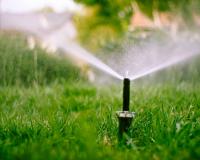
Vibrant Environment
Oceans And Coasts
All | Biodiversity | Climate Change and Sustainability | Environmental Justice | Governance and Rule of Law | Land Use and Natural Resources | Oceans and Coasts | Pollution Control

The Chesapeake Bay is the largest estuary in the United States. More than 150 major rivers and streams flow into the Bay's 64,299-square-mile drainage basin, which covers parts of six states (Delaware, the District of Columbia, Maryland, New York, Pennsylvania, Virginia, and West Virginia) and all of Washington, D.C. (the Bay jurisdictions). With its diverse flora and fauna, the Chesapeake Bay is a very important feature for the ecology and economy of these regions.
If you told me years ago that I would be pursuing a degree in statistics and machine learning, I would not have believed you. Even after receiving the 2021 National Wetlands Award and immersing myself in a vibrant and innovative college environment, I have come to more fully appreciate the many ways we can approach wetlands conservation and education efforts.

In one of the most famous speeches in American history, President John F. Kennedy implored his fellow Americans to “Ask not what your country can do for you—ask what you can do for your country.” I’m borrowing JFK’s words to illustrate how I approach restoration: Ask not what the land can do for you—ask what you can do for the land. This maxim evokes something greater than oneself that deserves respect, service, and ethical treatment. For JFK, it was country. For me it is the land, or to be more accurate, an ecosystem.

Having worked to conserve Nebraska’s wetlands over the past 30 years, and in honor of National Wetlands Month, I have been reflecting on what factors make wetland conservation successful. Thanks to the collaboration of many different partners, including landowners, we can be proud of the accomplishments made in wetland research, restoration, and management. To build on these successes, I believe it is important to broaden the network of people who understand wetlands and support their conservation. To do this, we need to expand and improve our outreach and education efforts.

He aliʻi ka ʻāina, he kauā ke kānaka. This frequently spoken ʻōlelo noʻeau, or proverb, succinctly sums up the Hawaiian view on the human relationship to our environment: the land is the chief, and people are the servants. Traditionally, wetlands in particular were revered as agriculturally productive lands where the elder sibling of the Hawaiian people and staple of life, kalo (taro), was grown.

Wetlands are critical ecosystems that provide important benefits for people and wildlife. They provide flood protection, resilient infrastructure, carbon storage, increased water quality, and are integral to the culture and economy of local communities. The urgency of preserving these important resources is only heightened by the reality of climate change.

How we communicate about our environment matters just as much as what we communicate if we want our message to be heard. ELI Press’ new book, Mud Lake, reaches out to a broad audience, from middle schoolers to senior citizens, by incorporating illustrations and universal adventure stories of how kids engaged with natural areas during the 1960s. The book is filled with narrations about sights, sounds, feelings, and smells that spark fond memories for anyone who may have experienced similar landscapes during their youth.

Since 1997, World Wetlands Day has been highlighting the importance of wetlands for people and the planet and helping to encourage wetlands preservation. Wetlands are typically defined as areas of land that are either covered by or saturated with water. Wetlands are critical ecosystems that provide numerous important benefits for people and wildlife and are integral to the culture and economy of local communities.

Although water covers 70% of the earth’s surface, only 1 percent is available for human use. While freshwater supplies remain relatively finite, demand for water in the United States has tripled over the past 50 years.

On May 25, the U.S. Supreme Court eliminated a major swath of CWA protections when it issued its decision in Sackett v. Environmental Protection Agency. In the Court’s view, the CWA extends to only those "wetlands with a continuous surface connection to bodies that are 'waters of the United States' in their own right," such that they are indistinguishable from those waters.